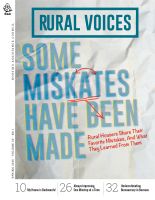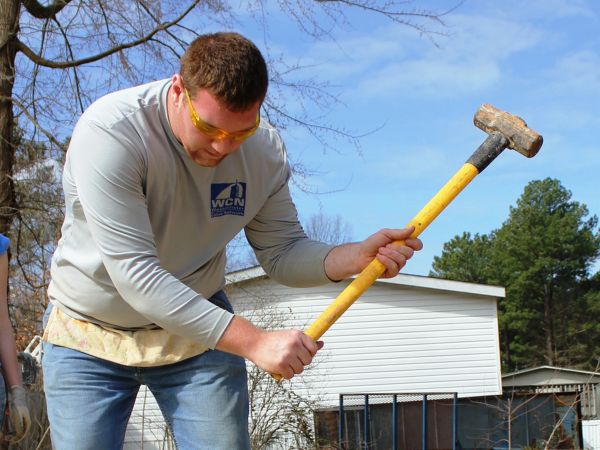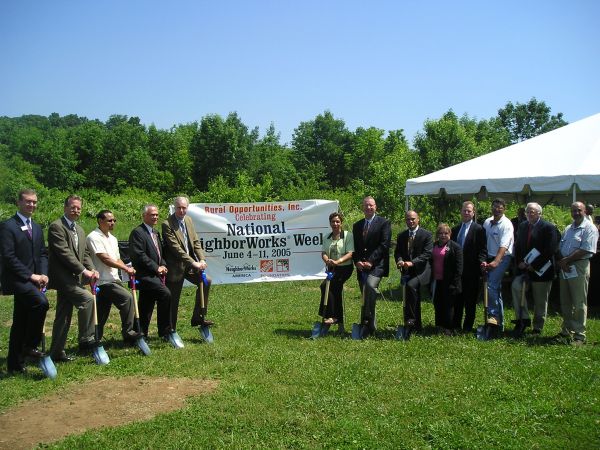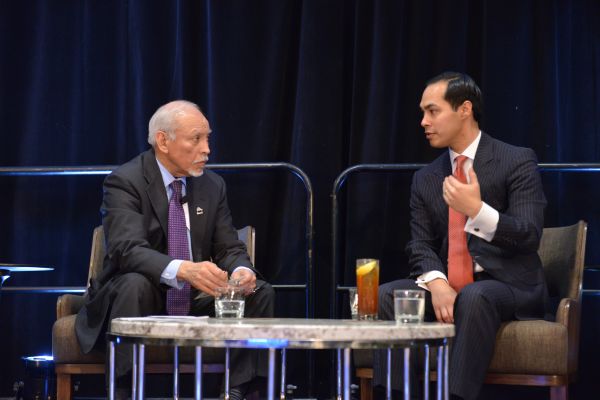Newly Appointed Under Secretary of Rural Development Lisa Mensah
 This story appears in the 2015 Spring Edition of Rural Voices
This story appears in the 2015 Spring Edition of Rural Voices
Shares thoughts on the centrality of housing in the USDA Rural Development portfolio
by Lisa Mensah
Since becoming the Under Secretary approximate ly four months ago, I have been focused on lifting up the amazing track record of accomplishments that make up the USDA rural development portfolio. With total outstanding loans and guarantees valued at over $200 billion, the USDA rural development portfolio represents one of the country’s most impressive development banking enterprises. Rural America is better because of the years of investment made through USDA Rural Development programs in housing, utilities, and businesses. Our portfolio of investments is rich in the tradition of investments in rural electric sys tems and water systems along with new invest ments in renewable energy systems, broadband, and value-added agriculture production. In the area of rural housing, however, is where we do our largest work.
In the past five years, USDA Rural Development has helped more than 900,000 rural families buy or refinance a home. In one year–fiscal year 2014 –we helped over 146,000 Americans become homeowners. Rural Development’s Rural Housing Service is the only federal agency that provides one hundred percent financing to qualified families and requires no down payment. Our direct loans can be combined with payment assistance for the purpose of helping low-and very low-income families in rural areas achieve homeownership. Our single-family housing loan guarantee program made available $24 billion in guaranteed loans to allow low- and moderate-income families to purchase homes in rural areas. This guarantee program provides vital support to private markets and comes at a time when our nation still struggles to regenerate the important homeownership market in rural America.
In addition to promoting affordable home ownership, we are committed to preserving rental housing in rural America. Our housing program provides financing for rental housing projects, as well as rental assistance payments for many low-income tenants residing in those projects. Our current portfolio provides housing to over 713,000 low income individuals who live in one of over 14,000 projects supported by our financing. Our ability to support rental hous ing in rural America is part of our conviction that rural America needs to have a full range of housing options in order for workers, farm laborers, families, retirees, and the disabled to all make their contributions to a successful rural community.
I am particularly proud of the work USDA accomplishes in its housing programs. Our staff is committed to building on the legacy that the USDA has established in both its single-family and multifamily programs. I am also proud that our staff understands the current challenges in these programs. I am pleased by the plans now underway to make USDA programs focused on the customer through improved business processes. I am also pleased that we are focused on working with our stakeholders to find the best solutions for preserving multifamily housing in rural America. I am convinced that the best solutions are developed in partnership and thus I am so pleased to consider the Housing Assistance Council a strong partner to our work. Our work cannot grow without advocates who edu cate our leaders and the public about the needs of rural America for safe afford able housing.
I started my career in commercial banking and moved to the Ford foundation where I spent 13 years making grants and loans predominately in rural America in places of high poverty. What I saw in my years at the Ford Foundation, both in the U.S. and in many other countries, was the long hard work of lasting development. While larger economic forces undoubtedly affect the pace of economic change, investing in people and institutions who can create conditions for a business to flourish or for new housing is the path to renewal and hope.
I recently toured a multifamily property in Florida financed by USDA Rural De velopment for farm workers and their families. Often the Under Secretary participates in the groundbreaking or ribbon-cutting for a project. However, in this case, I was able to see a property we had financed 15 years ago. What was striking is how beautiful the property still was after 15 years. The units were in wonderful condition, the laundry room sparkling clean, the community room inviting and the preschool was the kind of warm and nurturing environment
we all want for our children. It was a testament to the hard work and care for maintenance of the residents and property managers and the commitment of those who have worked so hard to bring the project to fruition. It was also a reminder of the lasting rewards that investing in housing can bring. Already a whole generation had benefited from this project and another generation is set to continue to thrive in a safe, affordable and comfortable setting.
What stands out for me as I think about the breadth of programs operated at USDA by the Rural Development team is that we are fortunate to have tools that have been proven to be successful in helping rural communities grow. The loans and grants we make each year con tribute directly to changing communities and inspire private markets to help us go much further in building rural America. I look forward to being a champion for the work of rural development and to calling on the wisdom of the many partners who make our work possible.
 Lisa Afua Serwah Mensah was nominated by President Obama for the position of Under Secretary of USDA Rural Development and she was confirmed by the U.S. Senate in November of 2014. An expert in using financial tools to improve the economic security of the working poor, Ms. Mensah has experience in the private financial sector and has worked extensively on small and micro business development, housing, and financial and savings policy. Prior to joining USDA, she was the founding Executive Director of the Initiative on Financial Security at the Aspen Institute. Ms. Mensah began her career in commercial banking at Citibank before join- ing the Ford Foundation where she was respon- sible for the country’s largest philanthropic grant and loan portfolio of investments in rural America. Ms. Mensah holds an M.A. from the Paul H. Nitze School of Advanced International Studies of The Johns Hopkins University and a B.A. from Harvard University.
Lisa Afua Serwah Mensah was nominated by President Obama for the position of Under Secretary of USDA Rural Development and she was confirmed by the U.S. Senate in November of 2014. An expert in using financial tools to improve the economic security of the working poor, Ms. Mensah has experience in the private financial sector and has worked extensively on small and micro business development, housing, and financial and savings policy. Prior to joining USDA, she was the founding Executive Director of the Initiative on Financial Security at the Aspen Institute. Ms. Mensah began her career in commercial banking at Citibank before join- ing the Ford Foundation where she was respon- sible for the country’s largest philanthropic grant and loan portfolio of investments in rural America. Ms. Mensah holds an M.A. from the Paul H. Nitze School of Advanced International Studies of The Johns Hopkins University and a B.A. from Harvard University.



 The 24-unit FmHA project (later named Diamond Sunrise I) was completed and occupied in 1987, but the years of struggle took its toll. Interested local citizens, FmHA, and DHCD became increasingly concerned with governance and management. In 1990, DHCD asked the Rural California Housing Corporation (RCHC) to make a servicing visit that showed the Gray Panthers to be a “shell corporation” without an effective board. RCHC, with guidance from FmHA, project residents, and community leaders, negotiated a reconstituted board-based nonprofit, Diamond Sunrise Corporation, to assume control and ownership of the project. RCHC staff joined the board of directors, and assisted the board in overseeing the management of the 24-unit development.
The 24-unit FmHA project (later named Diamond Sunrise I) was completed and occupied in 1987, but the years of struggle took its toll. Interested local citizens, FmHA, and DHCD became increasingly concerned with governance and management. In 1990, DHCD asked the Rural California Housing Corporation (RCHC) to make a servicing visit that showed the Gray Panthers to be a “shell corporation” without an effective board. RCHC, with guidance from FmHA, project residents, and community leaders, negotiated a reconstituted board-based nonprofit, Diamond Sunrise Corporation, to assume control and ownership of the project. RCHC staff joined the board of directors, and assisted the board in overseeing the management of the 24-unit development.






 Loza: The Rural Housing and Economic Development program is something that I think is very dear to the hearts of many people working in rural communities. Any thoughts about whether that initiative could be reinstated or brought back?
Loza: The Rural Housing and Economic Development program is something that I think is very dear to the hearts of many people working in rural communities. Any thoughts about whether that initiative could be reinstated or brought back?